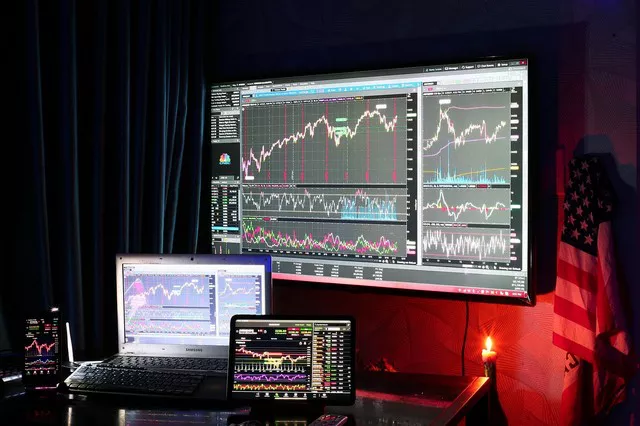Lumber futures play a vital role in the global commodities market, serving as a key indicator of economic activity and construction trends. As demand for lumber continues to rise, investors and traders seek opportunities to profit from price movements in the lumber futures market. In this article, we will explore the ticker symbol for lumber futures, delve into the dynamics of the lumber futures market, and discuss the factors that influence lumber prices.
Understanding Lumber Futures
What Are Lumber Futures?
Lumber futures are financial contracts that obligate the buyer to purchase a specific quantity of lumber at a predetermined price on a specified future date. These contracts are traded on commodities exchanges such as the Chicago Mercantile Exchange (CME) and provide a way for producers, consumers, and speculators to hedge against price fluctuations in the lumber market.
Importance of Lumber Futures
Lumber futures play a crucial role in the lumber industry by providing price transparency, risk management tools, and liquidity for market participants. They enable lumber producers to lock in prices for their products, construction companies to manage costs for building projects, and investors to speculate on future price movements.
The Ticker Symbol for Lumber Futures
Symbol for Lumber Futures
The ticker symbol for lumber futures traded on the Chicago Mercantile Exchange (CME) is LB. When searching for lumber futures contracts on trading platforms or financial news websites, you can use the ticker symbol LB to identify relevant contracts.
Contract Specifications
Lumber futures contracts traded on the CME have specific contract specifications, including the contract size, tick size, expiration months, and trading hours. For example, one lumber futures contract typically represents 110,000 board feet of random length lumber, with a tick size of $0.10 per thousand board feet. Contracts are available for delivery in specified expiration months, typically extending several months into the future.
Trading and Settlement
Lumber futures contracts are traded electronically on the CME Globex platform and cleared through the CME Clearing House. Trading hours for lumber futures typically extend from Sunday evening through Friday afternoon, with regular trading and extended trading sessions. Contracts are settled through physical delivery, with buyers taking delivery of lumber and sellers delivering lumber to fulfill their contractual obligations.
Factors Influencing Lumber Prices
Supply and Demand Dynamics
Like any commodity, lumber prices are influenced by supply and demand dynamics. Factors such as housing starts, renovation activity, and infrastructure projects can drive demand for lumber, while factors such as sawmill capacity, logging restrictions, and transportation costs can impact supply. Changes in supply and demand fundamentals can lead to fluctuations in lumber prices.
Economic Indicators
Lumber prices are closely tied to broader economic indicators, particularly those related to the housing market and construction industry. Indicators such as housing starts, building permits, and construction spending can provide insights into future demand for lumber and impact lumber prices accordingly. Economic trends, such as interest rates, employment levels, and consumer confidence, can also influence lumber prices.
Seasonal Trends
Lumber prices often exhibit seasonal trends based on weather patterns, construction cycles, and other factors. For example, lumber demand tends to increase during the spring and summer months, as construction activity picks up and weather conditions become more favorable for building projects. Conversely, demand may decline during the winter months, leading to lower lumber prices.
See Also: What is the lot size for gas futures?
Currency Exchange Rates
Lumber prices are also affected by currency exchange rates, particularly for lumber-producing countries that export their products to international markets. A stronger domestic currency relative to other currencies can make lumber exports more expensive and reduce demand, while a weaker currency can make exports more competitive and increase demand.
Market Speculation
Speculative trading activity can also influence lumber prices, as investors and traders buy and sell lumber futures contracts based on their expectations of future price movements. Factors such as market sentiment, technical analysis, and geopolitical events can drive speculative trading and contribute to price volatility in the lumber futures market.
Risks and Considerations
Price Volatility
Lumber prices can be highly volatile, driven by a wide range of factors including supply and demand imbalances, weather events, and market speculation. This volatility can present both opportunities and risks for investors and traders, as sharp price fluctuations can lead to significant gains or losses.
Market Liquidity
Liquidity can vary in the lumber futures market, particularly for contracts with distant expiration dates. Thinly traded contracts may have wider bid-ask spreads and lower trading volumes, making it more challenging to enter and exit positions at desired prices. Traders should be mindful of liquidity considerations when trading lumber futures.
Physical Delivery
Lumber futures contracts are settled through physical delivery, meaning that buyers and sellers may be required to take or make delivery of lumber at expiration. While most traders close out their positions before expiration to avoid physical delivery, those holding positions until expiration should be prepared to fulfill their contractual obligations.
Regulatory Risks
The lumber futures market is subject to regulatory oversight by agencies such as the Commodity Futures Trading Commission (CFTC) in the United States. Regulatory changes or interventions can impact trading activity, margin requirements, and other aspects of the market, potentially affecting the profitability of trading lumber futures.
Conclusion
Lumber futures offer a way for market participants to hedge against price risk, speculate on future price movements, and gain exposure to the lumber market. Understanding the ticker symbol for lumber futures, as well as the factors that influence lumber prices, is essential for investors and traders looking to navigate this dynamic market. By staying informed, managing risks, and adhering to sound trading principles, participants can effectively participate in the lumber futures market and capitalize on opportunities in the global commodities landscape.


